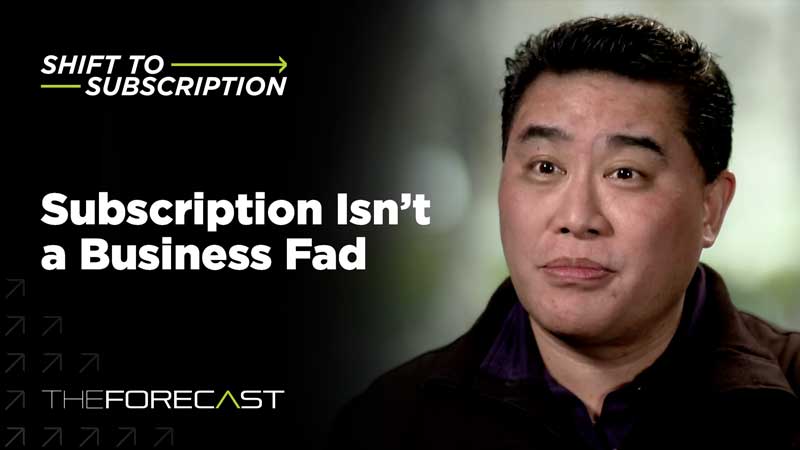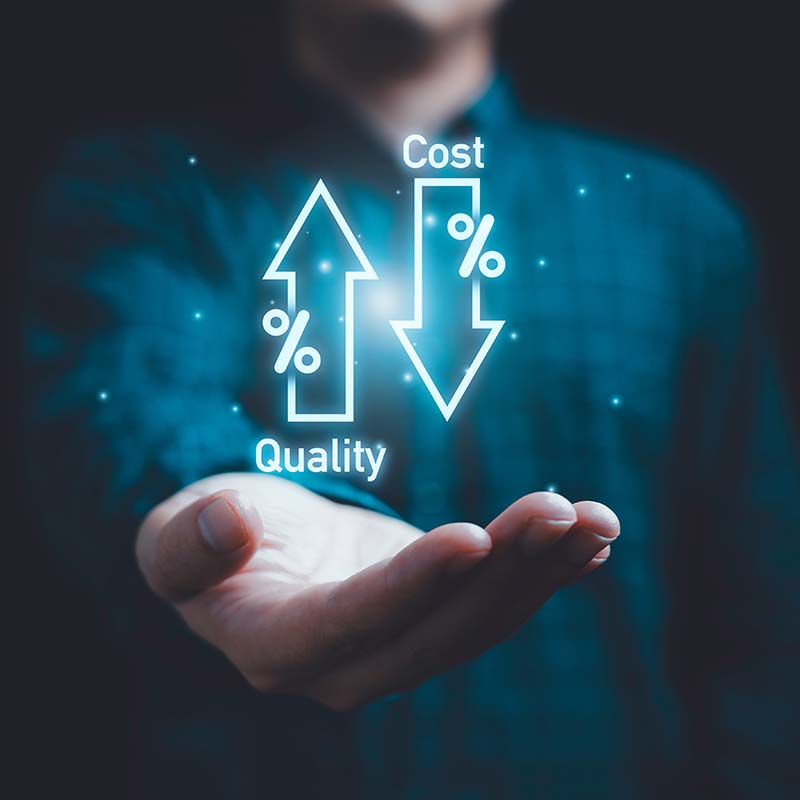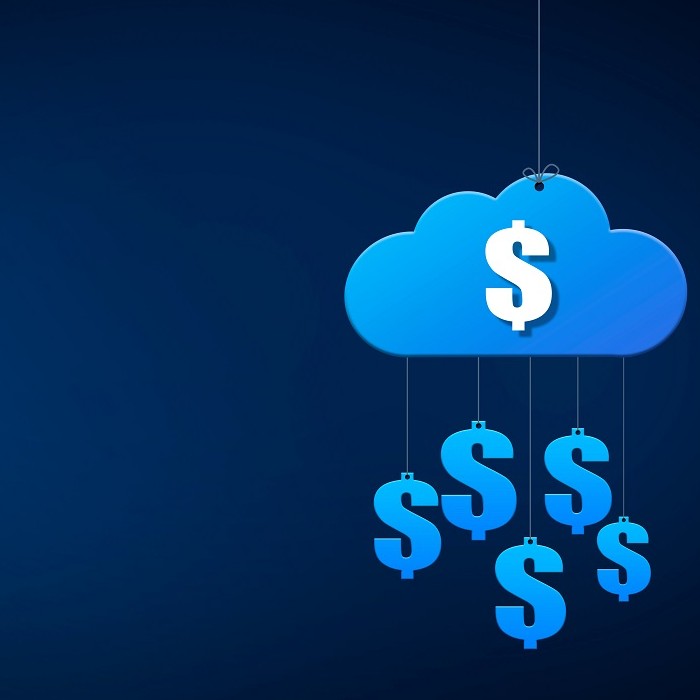Like popcorn kernels in a hot barrel pot, a few well-known tech companies were the first to pop on the scene with their subscription-based services. It started with Salesforce, Adobe, Microsoft and SAP, but then it was like every kernel began to pop. Companies like Oracle, Google, Amazon, Netflix, Uber, Chegg and Nutanix offered subscriptions. The lid is off and the kernels keep popping.
Shift to Subscription is a series by The Forecast exploring the rise of subscription business models.
“If you look at the most valuable companies in the world, they are currently now cloud-based subscription companies,” said Dan Rosensweig, CEO of Chegg, an online education service with nearly 3 million Chegg Services subscribers as of May 2020. The company expected to see more than 45% growth in subscribers between Q1 and Q2.
“It’s an easier business to run, it’s an easier business to forecast, but most importantly, you can actually build a better product because you have a direct relationship with the customer. Margins go way up, profitability goes way up, free-cash-flow goes way up, and that situation has happened every time in every one of the major companies who’s made a transition.”
Subscription services are not a technology business fad, according to R “Ray” Wang, CEO and principal analyst at Constellation Research. They’re legit. The so-called subscription economy is real and growing.
“The companies winning in digital transformation all have subscription models,” said Wang in an interview with The Forecast. “The companies betting on data all have subscription models. The cloud companies all have subscription business models.”
He said increasingly people and businesses want access and don’t necessarily want ownership.
“This is one of the most important trends we’re seeing for the next decade.”
Data-Driven, Predictable Business
While companies that don’t offer subscription services may risk being left behind, Wang said it’s a business model that can be tough to start, especially for existing companies switching from traditional upfront selling models. Companies that adapt can build better relationships with customers, focus on meaningful innovations and better predict their financial performance, which is critical to investors.
“Companies are looking at this as a better way for forecasting revenue,” said Wang. “Wall Street will give companies better evaluations for knowing that they've got better predictability on their revenue streams.”
Implementing a subscription model can significantly lower revenue in the first few quarters, Wang said, but there are many examples showing how recurring revenue plus revenue from new customers can lead to a financially healthy company. He pointed to Adobe and Microsoft, which moved from big one-time, upfront product sales to a recurring, renewable sales approach.
In 2011, Adobe announced intentions to shift to subscriptions. Two years later, it moved from selling applications shipped on CDs to also offering subscriptions to download cloud-delivered applications. This changed how customers paid for and received their Adobe software. They no longer paid full price to own the latest version. Instead, they paid for access and got new versions as soon as they were available. In 2013, the company had about $200 million in annual recurring revenue. By March 2020, Adobe reported that its Digital Media, Creative and Document Cloud services achieved a combined annualized recurring revenue of $17.46 billion. Between 2013 and 2020, Adobe’s stock price jumped from $38 to over $370.
“Our recurring revenue model and the real-time visibility we have into our business uniquely positions Adobe to manage through an uncertain environment,” said John Murphy, Adobe executive vice president and CFO during the company’s first quarter fiscal year 2020 earnings report.
Like Adobe, even Microsoft struggled as it shifted from an asset purchase model to a software and services (SaaS) subscription model in 2014. They swallowed the fish, as the saying goes, when they moved from on-premise to SaaS. Revenue temporarily dropped below operating expense before climbing back. And they have never turned back. Between 2014 and 2020, Microsoft’s stock price jumped from $37 to $180.
Subscriptions make business performance more predictable because customers pay incrementally on a monthly, quarterly or annual basis. Wang said this means companies no longer need to rely on winning new customers quarter after quarter, year after year.
“I'd rather see the subscription and know for sure revenue will be there,” he said. “It’s like having a bird in the hand versus trying to figure out if there might be a big deal down the line.”
Subscriptions for Business Technologies
Subscriptions are nothing new to the media and entertainment industries, but the business model is making more sense for the technology industry, said Wang. One of his favorite analogies for this is Netflix.
“Remember, ‘please be kind, rewind?’ You get the little physical box, that little disc in the mail, then suddenly there’s nothing. We’re just subscribing to a channel.”
He said a similar thing is happening in IT departments across industries.
“First you got the appliance, then it became about software and suddenly you’re accessing that service in the cloud,” Wang said. “Just like what we see on the consumer side, it’s happening on the enterprise side and those two worlds are coming together.”
He said cloud computing has changed the business world dramatically in the past two decades. Companies no longer want to spend millions of dollars on equipment all at once. Instead, they’d rather free up some money for innovation and find ways to reduce costs. This is forcing tech companies to think and act differently. That’s where subscriptions come into play.
“Companies must focus on customer needs,” said Wang. “They are constantly looking for feedback loops. Once you get into subscription, you have digital feedback loops. You know what customers are doing.”
He said it allows companies to find and fix problems quickly, provide updates in real-time and adapt to customer needs before the renewal.
“Everything is software defined today,” he said. “You can light up features, integrate and orchestrate a lot better than before.”
He said anyone paying upfront for software isn’t getting the benefits of constant innovation, which is a major promise and benefit of cloud computing.
Wang sees subscription businesses driving down the cost of customer acquisition, strengthening customer retention and providing more meaningful measurements like churn rate.
It’s giving companies more information to better serve customers and run their business in a world of ever-changing needs.
Provide seamless, secure remote access to all of the apps that your staff need with Desktop-as-a-Service (DaaS). Take Nutanix Xi Frame for a test drive today, completely free.
Ken Kaplan is Editor in Chief for The Forecast by Nutanix. Find him on Twitter @kenekaplan.
Jim Goldman contributed to this story.
© 2020 Nutanix, Inc. All rights reserved. For additional legal information, please go here.
Related Articles

Three Trends Defining IT Sustainability in 2024
Enterprise Cloud Index report shows a dramatic shift in IT sustainability efforts, and experts explain why.













